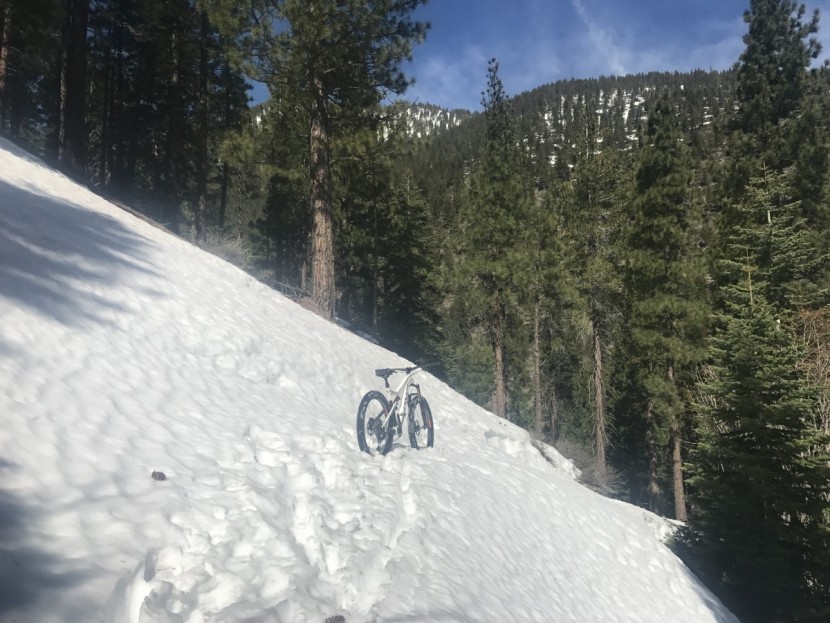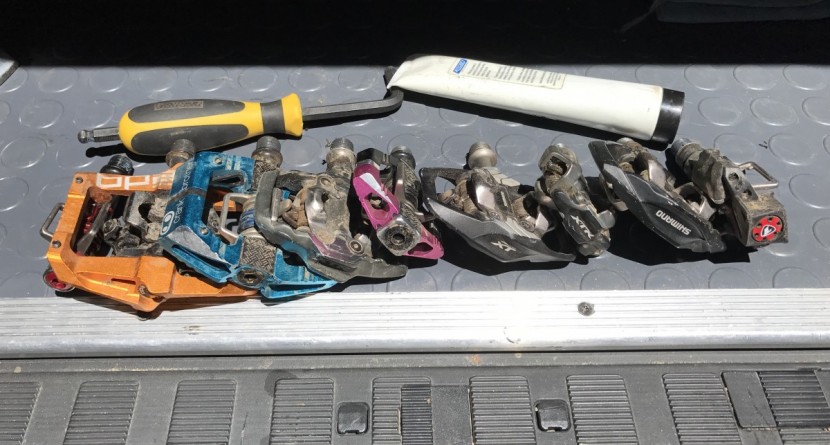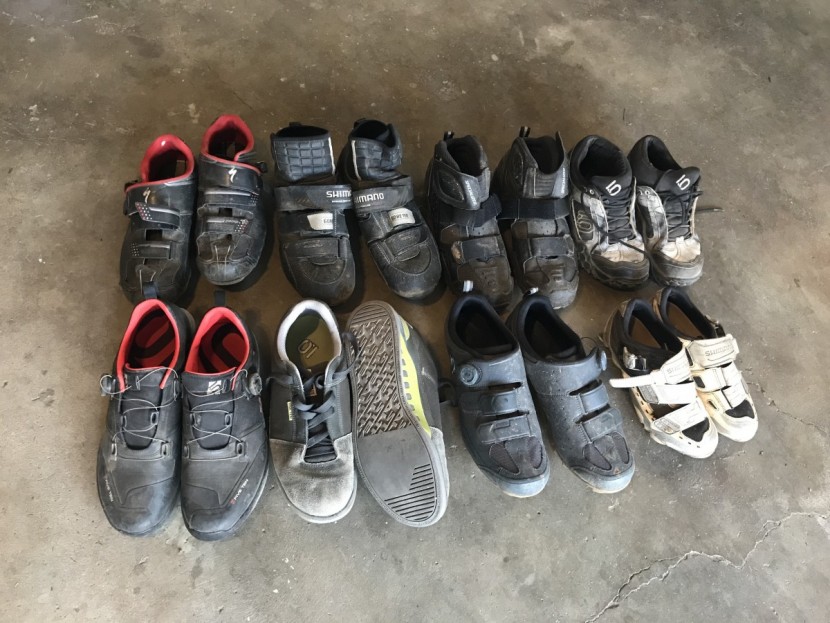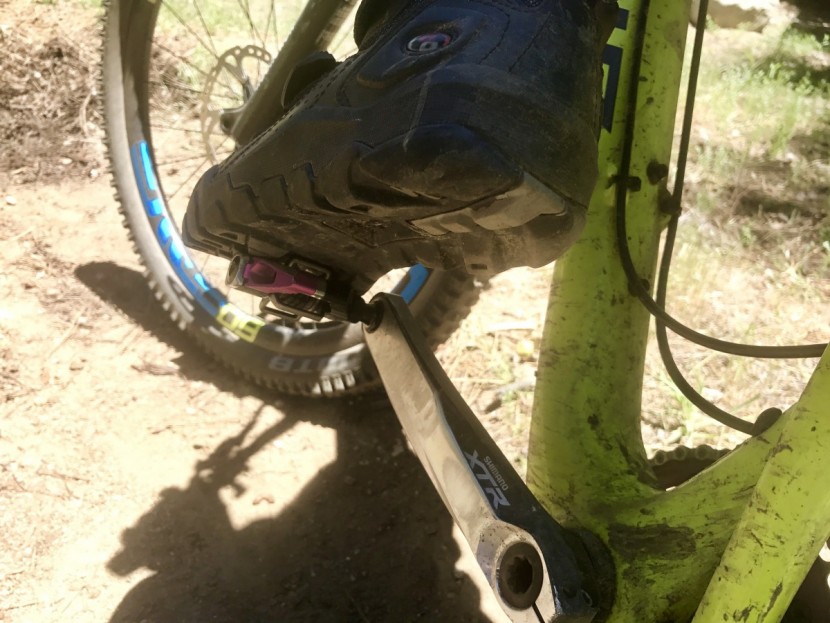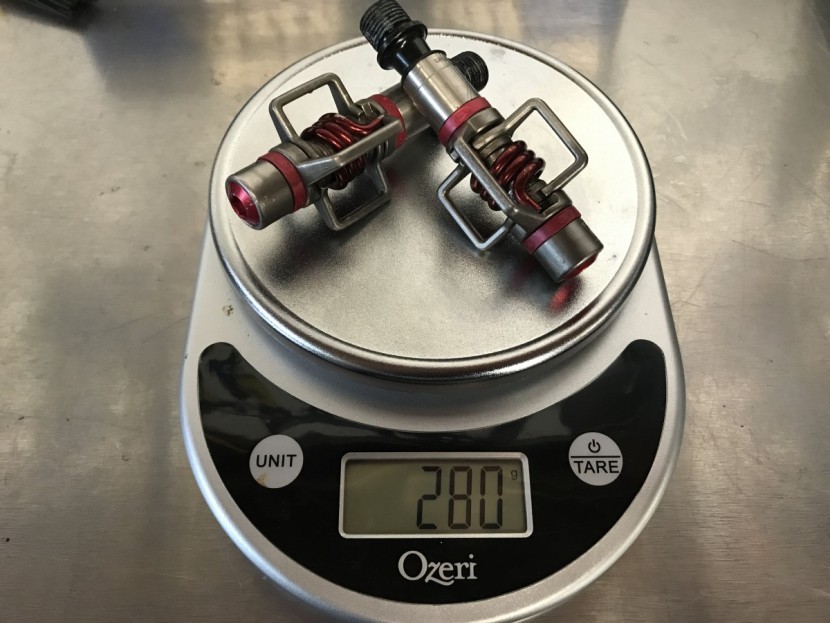How We Tested
To test these nineteen pairs of clipless mountain bike pedals, we rode in rain, sun, mud, sand, snow and perfect loamy single track. We tested in several different types of mud, ranging from coffee to Nutella. We rode them on hardtails, trail and enduro bikes using ten pairs of shoes with male and female testers. We swapped cleats countless times and got fast at moving pedals from one bike to another.
We use a wide array of shoes from different manufacturers that have different sole material, different cleat recesses and different stiffness indexes. We ride in stiff carbon xc racing shoes to freeride 5.10's with several data points in between. We take these pedals apart, analyze their components, count bearings, and even use a microscope to look at wear. We chat with tech support, test warranty service and go all in to get you the most accurate information about each set that we test.
Ease of Entry
We clipped in, clicked in, kicked in, slid in, and rode these pedals for dozens of hours. Using a wide variety of the most popular cycling shoes on different riders in every conceivable condition. Each time we encountered an engagement anywhere shy of perfect, we took note.
Ease of Exit
We used static and real riding tests to evaluate the ease of exit. In general, there were only subtle differences in the pedals here, with a few notable exceptions. If the pedal induced panic or we fell over, we took note of its position and tried to determine the cause. There are occasions when the traction pins can prevent a clean release, in most cases, those pins can be adjusted to reduce interference.
Adjustability
We considered three main attributes of adjustability — adjustability of the engagement mechanism, cleat options that changed the float or release, and accessories such as traction pads or grub pins that augmented the fit and feel of the pedal. Some pedals have little to no adjustability while others check every box. We scored pedals with more adjustability higher as they're more likely to meet your needs.
Weight
We weighed each set of pedals with and without hardware, and also weighed their cleats. We compared our weights with the manufacturers' stated weights; most pedals were close to their stated weight.
Platform
We measure each pedal's cage dimensions using a digital caliper. We measure the profile height from base to base directly over the pedal spindle. We also measured the pedal's effect on Q-factor, using a caliper, which is the distance between the flange of the spindle where it meets the crank arm and the center of the engagement mechanism. This dictates how wide your stance will be and, in some cases, how likely you are to strike the pedal on a trail-side obstacle.
Mud Shedding Ability
To test this metric, we quite literally p[lay in the mud. We assess the performance in this metric using real-world riding conditions, but we also seek out the mud. When we're out testing, we'll purposely unclip in the mud, grind it into our cleats, and test the pedal's resilience to even our most contrived tactics.

